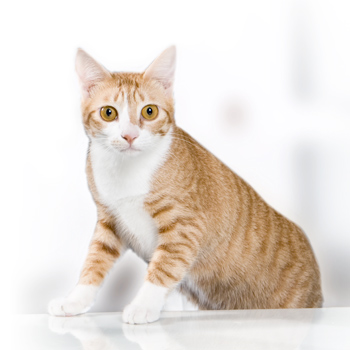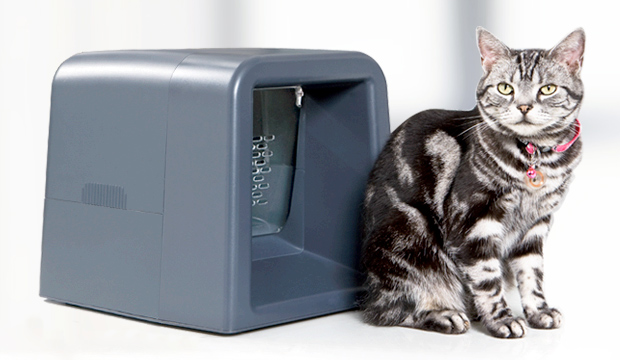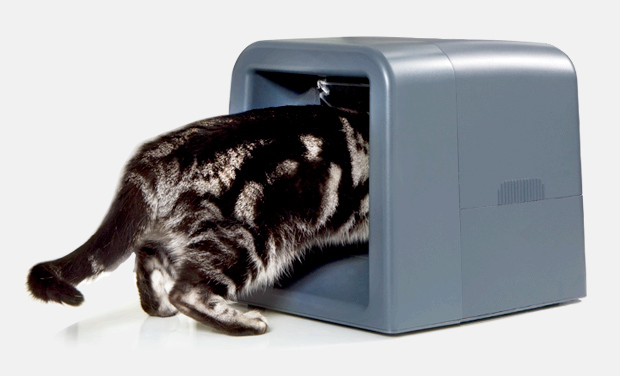Gatefeeder
The first patented controlled-feeding solution for cats


Besides their quiet companionship, cats offer a relatively low level of demand as a pet. Owners and their feline friends will enjoy the freedom of cat lover Philip Eu’s cleverly named invention, the Gatefeeder. The minimally designed controlled-access home feeding system works with a collar-mounted Smart ID tag to limit proper servings to the proper pet.
The Gatefeeder helps organize meals in multiple-cat homes, especially when one of the crew may need medication. Those who live on open farms can rely on the set-up to protect their cat’s food from pesky intruders, while outdoor cats wearing their tags can rest safe knowing strays won’t steal their rations.
Eu’s odyssey to create the Gatefeeder began when his cat, Mikey, got cancer. A new dietary regimen prevented Mikey from sharing with his housemate, Sparky. We talked to Eu to learn the story behind the decade-long labor of love to create the controlled-feeding system.

Tell us the story behind your decision to invent a feeding system for your two cats.
Plato is credited as having said, “Necessity is the Mother of Invention”. In 1999 I had a day job with long and irregular working hours, and two cherished cats, Mikey and Sparky. Then came the news, that Mikey had life threatening health issues, and I got strict Veterinarian instructions to only feed him a special medicated diet for the rest of his life. His special diet could not be shared with his brother Sparky, so I could no longer leave food out if I was going to be working late, and most nights I had to work late. After a few months of twice daily supervised meals, and with the help of friends and family for the night time feeding, I thought that there had to be a better way! I sketched out some ideas, and I now knew what our babies at home needed; now I just needed to figure out how to make the thing work. Plato was right!
What were some of the challenges that you faced in the 10-year process?
Like many inventors, this started as a weekend project for me, but each time I thought I had created the perfect solution, my cats showed me how smart they were, and sent me back to the proverbial drawing board.
I actually got stuck for over one year because the technology available didn’t allow me to make the machine I wanted. I had to wait until RFID technology became widely available and secondly, was reasonably priced before I could make the feeder I had envisioned in my mind. And still we had to overcome some very tough technical hurdles which we succeeded at because we didn’t know experts thought it was not possible.
What did you learn from the experience?
The amount of detail and minutia required is staggering and overwhelming. I never considered that one day I would need to write a manual detailing the millimeters tolerance for how two pieces of plastic fit together or how many scratches are allowed and how to define a scratch; Mind boggling.
What are some of the special features you held out for to make sure they were incorporated into the final product?
There are points designed in that allow users to drill bolts into the ground for situations (placement outside) where the feeder needs to be securely anchored, and the unit can allow up to five animals to use the feeder at the same time to allow users like animal shelters who might need such an option. We use more expensive stainless steel food bowls instead of various plastics because we believe they are the healthiest and most durable material for the cats, and a more expensive polycarbonate plastic for the clear parts because they are more resistant to scratching and clouding. The viewing window is not placed directly over the food bowl but angled so that an average person can stand in front of the feeder and see the condition of the dish without the need to bend over.
The Gatefeeder controlled feeding system is now available directly online from the inventor, designer and founder for $250.











